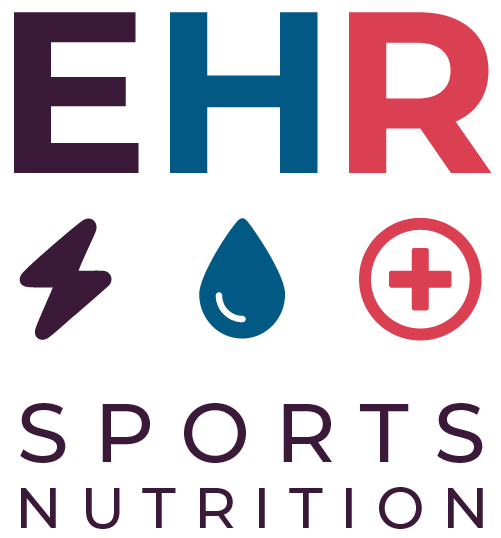
When to Take Energy Gels During a Run
Share
Introduction to Energy Gels
Energy gels are small, convenient sachets filled with a carbohydrate-rich substance designed to provide a rapid energy boost for endurance athletes. They have become increasingly popular among runners, cyclists, and triathletes due to their ease of consumption and quick energy release. In this article, we'll explore when to take energy gels during a run, as well as how to use them effectively.
Importance of Energy Gels for Runners
Long-distance running requires a sustained supply of energy to maintain performance and prevent muscle fatigue. Energy gels provide a quick and easily digestible source of carbohydrates, helping to maintain blood glucose levels and fuel the muscles during a run. Using energy gels strategically can make a significant difference in performance and overall experience during a race or long training session.
Factors to Consider When Using Energy Gels
Individual Fitness Level
Each runner has unique needs based on their fitness level, body composition, and metabolic rate. Some runners may require more frequent energy gel consumption, while others may find that fewer gels are sufficient. It's essential to test various strategies during training to find the optimal energy gel plan that works best for you.
Duration and Intensity of the Run
The length and intensity of your run will influence how often you should consume energy gels. For shorter runs, energy gels may not be necessary, as your body has enough glycogen stored to fuel the activity. However, for longer runs or races lasting 90 minutes or more, energy gels can help maintain energy levels and prevent fatigue.
Type of Energy Gel
There are numerous energy gel brands and formulations available, each with different carbohydrate sources, electrolyte content, and added ingredients. The type of energy gel you choose may impact when and how often you should consume it during a run.
How to Determine the Right Time to Take Energy Gels
Pre-Run Consumption
Taking an energy gel 15-30 minutes before a run can give you an initial energy boost, especially for early morning runs when your glycogen stores may be depleted. However, it's essential not to rely solely on pre-run gels, as they may cause a spike in blood sugar followed by a subsequent drop, potentially leading to energy crashes during the run.
During the Run
The optimal time to take energy gels during a run depends on the individual and the run's duration and intensity. Generally, it's advised to consume an energy gel every 45-60 minutes for runs lasting 90 minutes or longer. For ultra-distance events, some runners may need to consume gels more frequently. Always listen to your body and adjust accordingly.
Post-Run Recovery
While energy gels are primarily used during a run, they can also play a role in post-run recovery. Consuming an energy gel with added protein and electrolytes within 30 minutes after finishing your run can help replenish glycogen stores and kick-start the recovery process.
How to Use Energy Gels Effectively
Experiment with Different Gels
With numerous energy gel brands and formulations available, it's essential to try various options during training to find the one that works best for you. Some runners may prefer gels with added caffeine or electrolytes, while others may opt for more natural, organic options.
Practice Timing and Frequency
During training, experiment with the timing and frequency of energy gel consumption to find the optimal strategy for you. Practising this will help you avoid surprises on race day and ensure you're fuelling your body effectively.
Hydrate Properly
Staying well-hydrated is crucial when using energy gels, as dehydration can impair the absorption of carbohydrates and contribute to gastrointestinal issues. Be sure to drink water or an electrolyte-rich sports drink alongside your energy gels to maintain optimal hydration levels during your run.
Potential Side Effects and Precautions
While energy gels can provide numerous benefits for runners, they can also cause some potential side effects, such as gastrointestinal issues, energy crashes, and overconsumption of sugar. To minimise these risks, it's essential to practice using energy gels during training, stay well-hydrated, and listen to your body's signals.
Conclusion
Energy gels can be a valuable tool for runners seeking to maintain energy levels and improve performance during long runs and races. By considering factors such as individual fitness level, run duration and intensity, and the type of energy gel, you can develop a personalised strategy for when to take energy gels during a run. Always remember to experiment with different gels, practice timing and frequency, and stay well-hydrated to get the most out of your energy gel experience.
FAQs
How long before a run should I take an energy gel?
It's generally advised to consume an energy gel 15-30 minutes before a run for an initial energy boost. However, be cautious not to rely solely on pre-run gels, as they may cause energy crashes during the run.
Can I take energy gels on shorter runs?
For shorter runs, energy gels may not be necessary, as your body typically has enough glycogen stored to fuel the activity. However, if you feel you need a quick energy boost, consider taking a gel during your run, but be mindful of potential energy crashes.
Do I need to drink water with my energy gel?
Yes, it's essential to drink water or an electrolyte-rich sports drink alongside your energy gel to maintain proper hydration and aid carbohydrate absorption.
How do I avoid gastrointestinal issues when using energy gels?
To minimise gastrointestinal issues, experiment with different gel brands and formulations during training, practice proper timing and frequency of consumption, and ensure you're well-hydrated.
Are there natural alternatives to energy gels?
Yes, there are natural alternatives to energy gels, such as dates, bananas, and homemade energy bites. These options can provide similar benefits but may require more planning and preparation.
